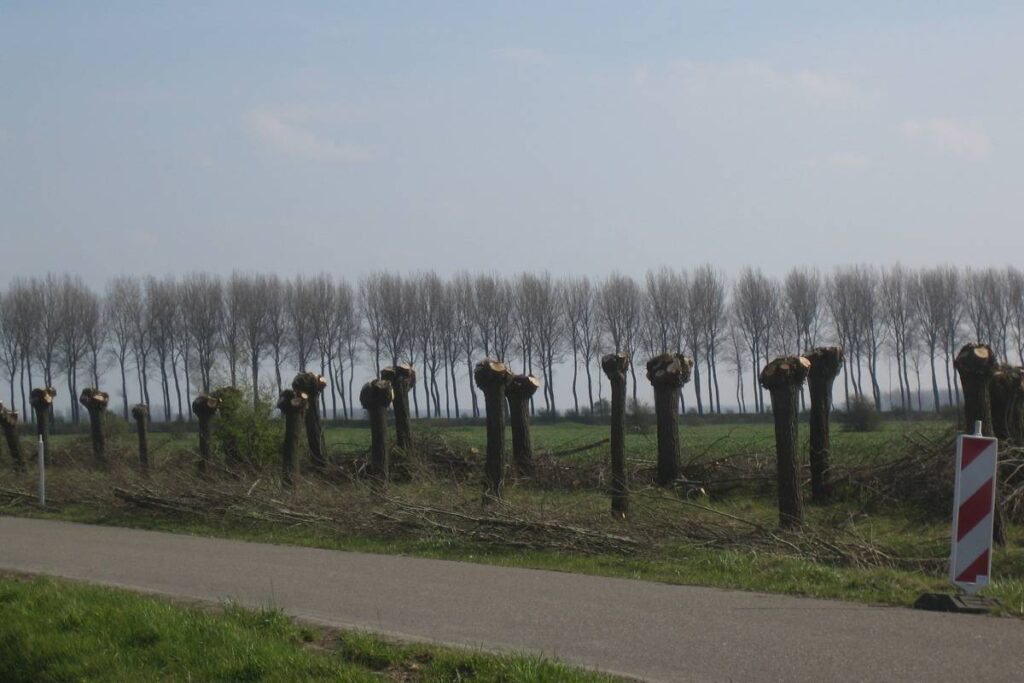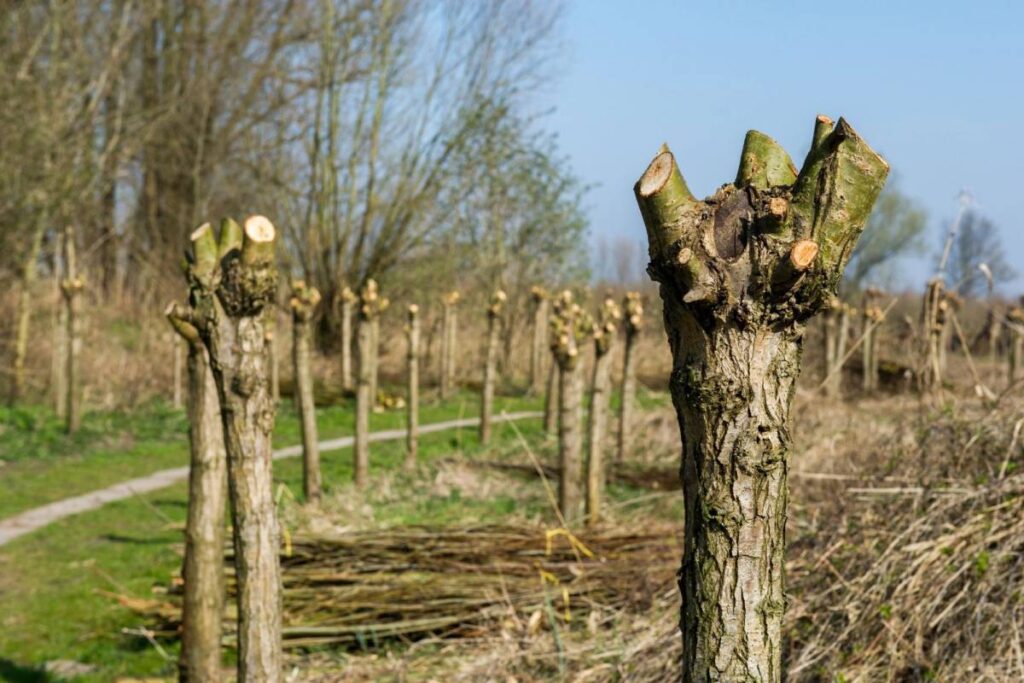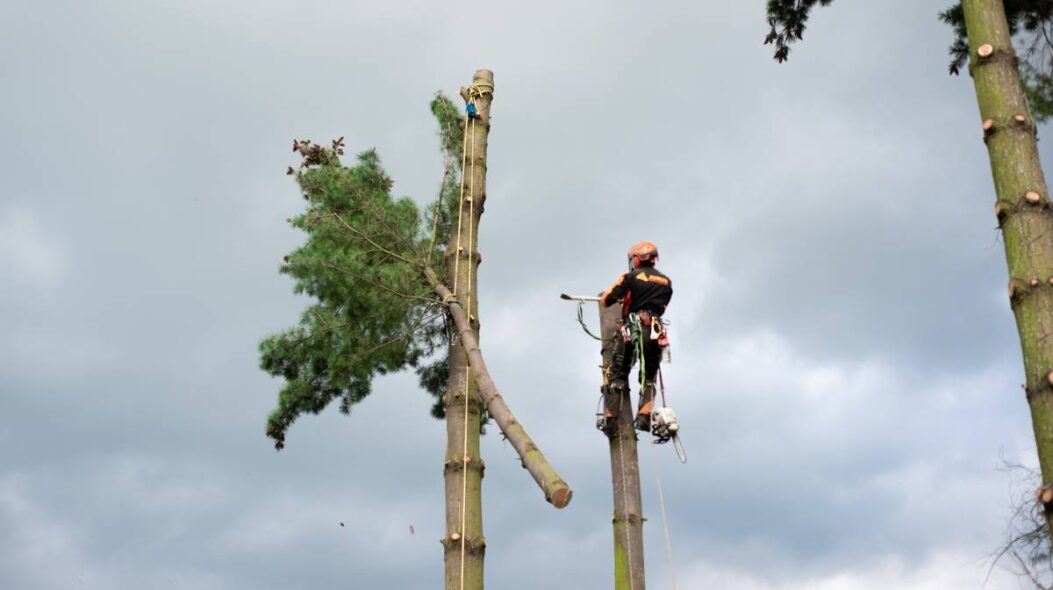You may have heard the terms tree lopping and pollarding used interchangeably, but they refer to distinct tree maintenance techniques.
Understanding the differences between these methods can help you make informed decisions about the health and aesthetics of your trees. While both practices involve pruning, they serve different purposes and involve different approaches.
In this post, you’ll explore the key differences between tree lopping and pollarding, helping you to better care for your landscape and ensure your trees thrive.
What is Tree Lopping?
The practice of tree lopping involves the removal of certain branches and limbs from a tree, often resulting in a rather drastic shaping of its overall structure. This method usually controls the tree’s size, enhances aesthetics, or ensures safety by preventing branches from interfering with power lines or nearby structures. While it can provide immediate results, the long-term effects on the tree should be carefully considered.
Definition and Purpose
For many property owners, tree lopping serves as a solution to manage tree growth and maintain a safe environment around their homes. The primary objective behind lopping is to reduce the overall mass of the tree, especially damaged or overgrown branches, while also fostering a healthier tree structure over time.
Benefits and Drawbacks
Lopping can provide several benefits, including improved light penetration and aesthetics, but it also carries potential drawbacks, such as increased vulnerability to disease and structural instability. As you assess your options, it’s important to weigh both the positive and negative aspects carefully.
The benefits of tree lopping include quick results in managing tree growth, enhancing visual appeal, and reducing hazards posed by overhanging branches. However, the drawbacks cannot be overlooked. Removing too much foliage can stress the tree, leading to weakened health and increased susceptibility to pests and diseases.
Additionally, improper lopping techniques may cause long-term damage to the tree, creating aesthetic and structural issues down the line. Thus, before you decide to lop your tree, ensure you understand the full implications and consult a professional if necessary.

What is Tree Pollarding?
Clearly, pollarding is a tree management technique involving the strategic cutting of branches back to a trunk or main stem. This method is often applied to trees in urban settings, as it promotes a compact growth form while maintaining the health and aesthetics of the tree.
Pollarding is typically performed on young trees at regular intervals, allowing them to grow a bushy canopy above head height, reducing potential hazards from fallen branches.
Definition and Purpose
Across various cultures and climates, pollarding serves both functional and aesthetic purposes. This technique is primarily employed to manage tree size, improve safety near power lines, and enhance light penetration in urban areas. Additionally, pollarding can help prolong the life of the tree by preventing large heavy branches from developing, ultimately creating a strong and resilient structure.
Benefits and Drawbacks
Among the benefits of pollarding are improved growth control, reduced maintenance costs, and enhanced safety. However, there are also drawbacks, such as the potential stress on the tree if not done properly and the requirement for regular upkeep as new shoots emerge each season.
At its core, understanding the benefits and drawbacks of pollarding allows you to make informed decisions about your tree management. While this practice can lead to healthier trees and a safer environment, improper techniques can cause long-term damage or stress. Ensuring you follow best practices and consult with a professional can maximize the positives while minimizing any negative impacts on your trees.
Key Differences Between Tree Lopping and Pollarding
Any distinction between tree lopping and pollarding primarily lies in their purpose and method. While tree lopping involves the indiscriminate cutting of branches, often for safety or aesthetic reasons, pollarding is a more controlled process aimed at encouraging new growth.
Pollarding offers a sustainable approach to tree management, enhancing the tree’s longevity and health while providing valuable habitats for wildlife. Understanding these differences helps you make informed decisions on tree maintenance.
Techniques and Methods
By examining the techniques and methods employed, you can see that tree lopping typically involves removing large branches indiscriminately, risking damage to the tree’s structure. In contrast, pollarding consists of cutting branches back to a specific height, promoting a more balanced growth pattern and preserving the tree’s overall health. Each method serves a distinct purpose, and choosing the right one impacts the future of your trees significantly.
Impact on Tree Health
Across the board, the impact on tree health varies significantly between the two methods. Tree lopping can lead to stress, disease, and decay, as it often removes large sections of the tree’s canopy. Pollarding, however, minimizes harm by focusing on controlled cuts, allowing trees to regenerate without losing their structural integrity. This careful approach not only enhances the tree’s resilience but also improves its aesthetics and longevity.
Further extending on the impact of tree health, it’s important to recognize that effective tree care influences the ecosystem surrounding your property. Pollarding helps sustain a healthier tree by maintaining an open canopy that allows light to penetrate. This not only encourages new growth but also reduces the likelihood of fungal infections and pest infestations, which are more common in trees subjected to lopping. By selecting the right method for tree management, you can invest in the health of your landscape for years to come.

When to Choose Tree Lopping
For health and safety reasons, you might choose tree lopping when a tree poses risks to structures, power lines, or people. This method can help manage tree size and promote better overall growth, allowing for enhanced sunlight and air circulation. By opting for lopping under these circumstances, you can maintain a safer environment while preserving the aesthetic and health of your trees.
Situations Favoring Lopping
Lopping is often favoured in scenarios where immediate tree height reduction is needed. This includes addressing overgrown branches that may interfere with nearby structures or paths. Additionally, if a tree is suffering from disease or has dead limbs, lopping can help remove these unhealthy parts, allowing the tree to thrive once again.
Professional Considerations
Around tree lopping, the expertise of a professional is invaluable. Trained arborists understand the best practices for lopping techniques to ensure minimal stress on the tree. They evaluate the specific needs of your tree and the surrounding environment, ensuring the chosen method fosters healthy growth and maintains safety standards.
But seeking professional help not only safeguards the health of your trees but also protects your property and investment. Arborists use the right tools and techniques, making precise cuts that encourage new growth while minimizing the risk of disease. Their insights can guide you in making informed decisions, whether lopping is the best course of action for your situation or if other methods, such as pollarding, may be more appropriate. Investing in expert advice means you can enjoy the benefits of healthy, well-maintained trees in your landscape.
When to Choose Pollarding
All tree owners should consider pollarding when seeking to manage the growth of specific tree species, ensuring their foliage stays within desired dimensions. This technique is particularly effective for trees that produce significant shade or obstruct views, as it encourages bushier growth at lower heights and maintains tree health while reducing the risk of damage from heavy limbs.
Situations Favoring Pollarding
By understanding your landscape, you can identify situations that might benefit from pollarding, such as areas where space is limited or where aesthetic appeal is a priority. This method is also ideal for promoting light and air circulation in densely planted gardens or managing growth near structures and utilities.
Professional Considerations
When considering pollarding, it’s advisable to consult with professional arborists who have extensive knowledge in tree care practices. They can guide you on whether this method is appropriate for your specific tree species and the best timing for execution.
But opting for professional help goes beyond just the right methods; it also ensures that you reduce the risks of injury to yourself or damage to your property. Experts can evaluate the health of your trees and tailor the pollarding process to meet their unique needs, contributing to your long-term landscape goals while enhancing your trees’ resilience and vitality.
Legal and Environmental Considerations
Keep in mind that both tree lopping and pollarding come with specific legal and environmental implications that you must navigate. Various regions have regulations aimed at protecting native trees and biodiversity, which may restrict certain practices. Ensuring that you comply with local laws not only protects your assets but also contributes to wider conservation efforts.
Regulations and Guidelines
Legal constraints often dictate tree management practices, which may vary by location. Always consult your local council or relevant authorities to understand any permits or assessments needed before undertaking tree lopping or pollarding. This ensures your actions are compliant and helps avoid potential fines or penalties.
Environmental Impacts
On the other hand, consider how tree lopping and pollarding affect your local ecosystem. Both methods can disrupt wildlife habitats and alter the tree’s biological processes, potentially harming long-term health and growth. Understanding these impacts can guide you in choosing more environmentally friendly alternatives.
Also, be aware that improper tree lopping can lead to stress for the tree, making it more susceptible to diseases and pests. By prioritizing sustainable practices, such as scheduled pruning or working with arborists, you can minimize negative environmental effects while still achieving your landscaping goals. A well-planned approach can maintain not just the trees’ health, but also the broader ecosystem in which they exist.
Conclusion
Upon reflecting, it becomes clear that understanding the differences between lopping and pollarding is vital for maintaining the health of your trees and landscape. While both techniques involve reducing tree size, lopping typically removes larger branches and can lead to stress and decay, whereas pollarding is a more sustainable method that promotes regrowth by cutting back branches to a specific point. By choosing the appropriate method for your trees, you can ensure they thrive and enhance your outdoor space for years to come.
